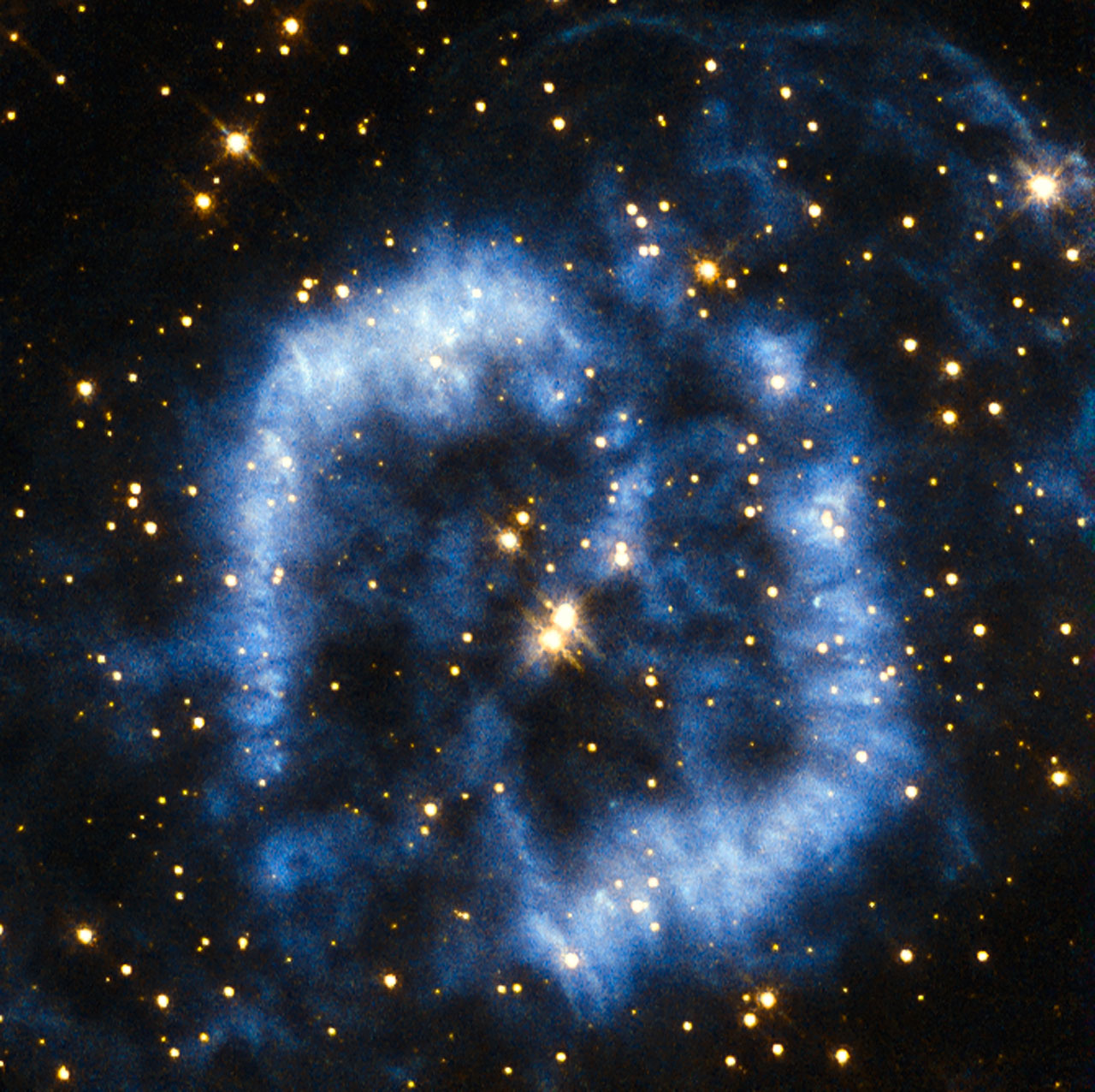
The giant, petulant star Eta Carinae has been prone to violent outbursts, including one that ejected material to form the bipolar bubbles seen here. The Orion Nebula is a crowded, nearby stellar nursery with a dramatic dust-and-gas landscape carved by the powerful ultraviolet light of hot, young, massive stars. Westerlund 2, a giant cluster of about 3,000 stars, resides in a raucous stellar breeding ground located 20,000 light-years away in the constellation Carina. Hubble took spectral observations used to study the chemical makeup of the Southern Crab Nebula. Learn More > Southern Crab Nebula (Spectra) The Crab Nebula is a six-light-year-wide expanding remnant of a star’s supernova explosion, which Japanese and Chinese astronomers recorded nearly 1,000 years ago. The enormous gravity of this massive cluster acts as a gravitational lens that magnifies and distorts the light of distant background galaxies. This immense galaxy cluster contains an astounding assortment of several hundred galaxies of various shapes tied together by the mutual pull of gravity. This image of the Whirlpool Galaxy illustrates a spiral galaxy’s grand design, from its curving spiral arms to its yellowish central core.Īmong Jupiter’s most striking features is the Great Red Spot, a storm rolling counterclockwise between two bands of clouds moving in opposite directions. Hubble captured an enormous bubble being blown into space by a super-hot, massive star. The Milky Way’s bulge is a crowded and dynamic region of variously aged stars zipping around at different speeds at the heart of our galaxy. Hubble captured exquisite views of Saturn’s ring system and atmospheric details that once could only be provided by spacecraft visiting the distant world. Stars are being born deep inside the so-called Pillars of Creation, which are made of cold hydrogen gas laced with dust.

#NASA HUBBLE SPACE TELESCOPE IMAGES SERIES#
The newborn star in Herbig-Haro 24 (HH 24) is hidden from direct view, but jets blasting out along its rotation axis create a series of glowing shock fronts, revealing the new star’s presence. The Lagoon Nebula, a vast stellar nursery located 4,000 light-years away, provides an extraordinary tapestry of star birth. The blue ring of glowing oxygen at left is the neighboring nebula NGC 2020, formed by a torrential gaseous outflow from a lone, massive, super-hot star at its center. Hubble reveals a colorful landscape of iridescent gases, streamers of dust, and brilliant, newborn stars in the giant red nebula NGC 2014. Four Successful Women Behind the Hubble Space Telescope's Achievements.Characterizing Planets Around Other Stars.Measuring the Universe's Expansion Rate.


 0 kommentar(er)
0 kommentar(er)
